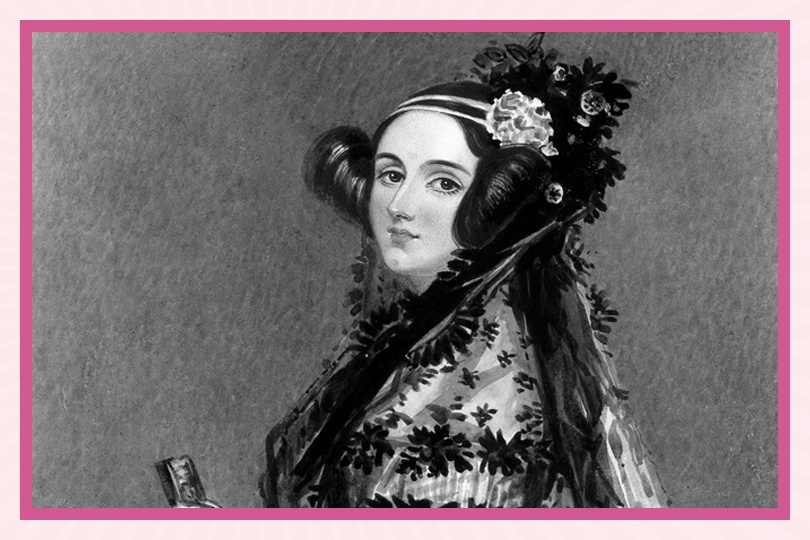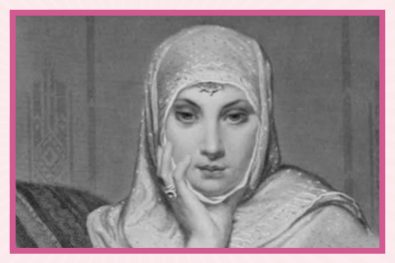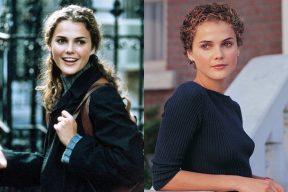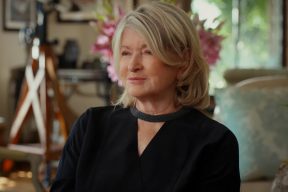By Sienna Vittoria Asselin
The world of STEM (science, technology, engineering, and math) is still overwhelmingly male; in Canada, women make up only 23% of Canadians working in science and technology. But initiatives, organizations, and institutions are doing what they can to change this, and one way that girls and women are being empowered to enter STEM fields is through the recognition and celebration of women in the sciences who came before. With that in mind, we’re looking back at the life and legacy of Victorian-era Ada Lovelace, a visionary mathematician considered to be the first computer programmer.
Early Life
Augusta Ada Byron was born on December 10, 1815, the first and only child of George Gordon, the famous Romantic poet known as Lord Byron, and his wife Anne Isabella (Annabella) Milbanke. Her father was disappointed, hoping for a “glorious boy.”
Author Lars Jaeger writes in the recently published Women of Genius in Science that it was a dysfunctional family; not only did Lord and Lady Byron clash in temperament, but throughout their short marriage, he maintained a passionate, incestuous affair with his half-sister Augusta, who Lord Byron named his daughter after. (Perhaps this is why she ended up going by her second name, Ada, instead of her first name, Augusta.)
Professors Robin Hammerman and Andrew L. Russell write in Ada’s Legacy, a volume of studies published in 2015 to commemorate the bicentennial of Ada’s death in 1815, that her relationship with her parents was unfulfilling. They were a wealthy, titled family, and she received many privileges from her upbringing, but her parents’ marriage was strained, and Lord Byron’s “social infamy led to his permanent self-exile from England in April 1816,” when Ada was just a baby. She never saw her father again.
He died abroad when she was eight years old, never having shown much of an interest in his only child, though according to Jaeger, Ada constantly longed for her father.
Meanwhile, her mother supported Ada’s education, herself a learned woman. In fact, Annabella hoped a rational upbringing would have a grounding effect and “suppress her daughter’s imagination,” thereby saving her from the romantic, erratic, and destructive fancies her father demonstrated.
By the time Ada was a teenager, she demonstrated what Hammerman and Russell refer to as an “unusual passion and aptitude for mathematics.” This was not a field that women of the era tended to be educated in, but she was fortunate to receive tutoring from several distinguished mathematicians.
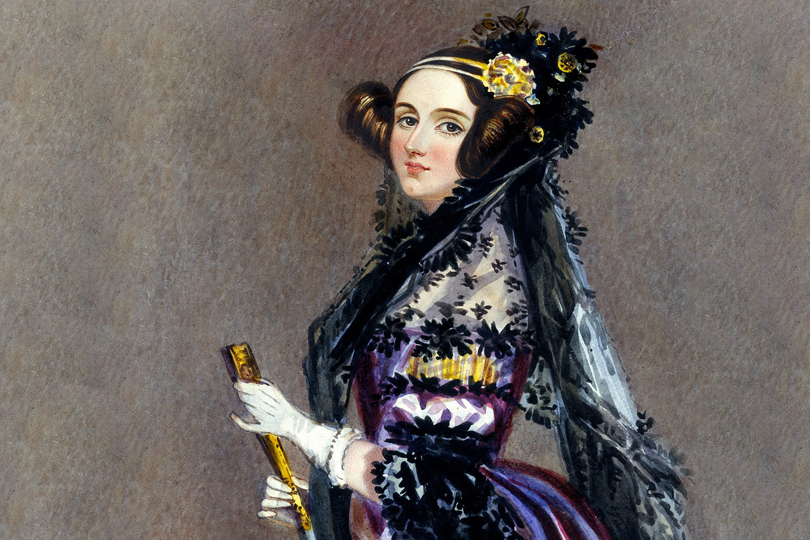
Enchantress of Numbers
Dr Corinna Schlombs, a scholar of the history and sociology of science, writes in The Palgrave Handbook of Woman and Science Since 1660 that after Ada was introduced to the royal court at 17 years old, she began to move in Victorian social circles that included notable scientists. For example, she met Mary Somerville, a prominent mathematical thinker, and she became a mentor to young Ada. Perhaps most importantly, in June 1833, she introduced Ada to Charles Babbage, a wealthy gentleman scientist who was working on a “mechanical calculating machine,” which Ada became utterly enchanted by.
In the meantime, Ada’s personal life was in shambles. For one, she struggled from poor health and according to Jaeger, regularly consumed opium until she developed an addition. Also, in that same year, 1833, Ada nearly eloped with a tutor she was having an affair with, but her family stopped her. Two years later, in 1835, she was married to Baron William King, a man 10 years older than her, who was later made earl of Lovelace, making her Countess of Lovelace.
She was now a married woman, no longer under her strict mother’s rule, but she had domestic and social duties to perform that left her little time for her scientific studies and correspondence.
Her husband was relatively supportive of her intellectual endeavors, but nevertheless, she was unsatisfied in her marriage, and when she was 19 years old she wrote in her diary: “I believe that nothing short of close and intense study of subjects of a scientific nature can stop my imagination from going haywire and fill the void that experiential hunger has left in my mind.” Between 1836 and 1839, the Kings had three children.
Ada and Babbage had stayed in touch and corresponded about scientific matters. His initial project, the Difference Machine, failed to take off due to lack of funding, and so he began to develop his Analytical Engine, in collaboration with Ada. She became Babbage’s confidante, and he admired her as an “enchantress of numbers.” It is unclear how involved she was in his invention, and like a good Victorian lady, she seemed to identify as merely his helper or assistant.
But what we do know is that from the start, Ada showed an immediate and rare understanding of Babbage’s vision. And furthermore, she also saw its greater potential. From late 1842 to the summer of 1843, Ada spent her time translating a French article on Babbage’s Analytical Machine into English. This helped circulate his ideas, but it went further than that. She also expanded on his ideas by adding her own supplementary notes underneath, which, according to Schlombs, “further demonstrated the machine’s capabilities.”
In fact, the notes included in her translation, which was published in 1843, ended up being three times longer than the original article. Ultimately, her vision for the machine seemed to go beyond what Babbage had himself envisioned. While Babbage saw his machine mainly as a tool for accurate calculations, Ada described “how codes could be created for the device to handle letters and symbols along with numbers.” Furthermore, she “theorized a method for the engine to repeat a series of instructions.” This progress is known as looping and is what computer programs use today.
Later Life and Legacy
Unfortunately, her work gained little attention during her lifetime and things did not go very well for her in the end. Her health deteriorated, she was deep into gambling, she “tried her husband’s patience with several affairs and an extraordinarily lavish lifestyle,” and eventually became estranged from Babbage. She died on November 27, 1852, from uterine cancer and her work was soon forgotten.
Just over a century later, in 1953, Ada’s notes were republished for the first time and sparked new interest in her thinking. Some scholars have debated whether she actually wrote the notes and whether her contribution to Babbage’s work was largely overstated. But ultimately, Ada has been recognized as the first computer programmer, a prophet of the digital age, and a visionary of science. In the 1980s, the US military named a programming language in her honour and over the last few decades, a wave of biographies, children’s books, and novels have brought her name into pop culture.
Ada is now a role model for girls to pursue careers in science and technology. Every year on October 15th she is recognized and the contributions of women to math and science are celebrated. As Suw Charman-Anderson, the founder of Ada Lovelace Day, told the New Yorker, “I started to think that one of the biggest parts of the problem was that women in tech are often invisible.” Celebrating women like Ada is one way that this is being changed.

